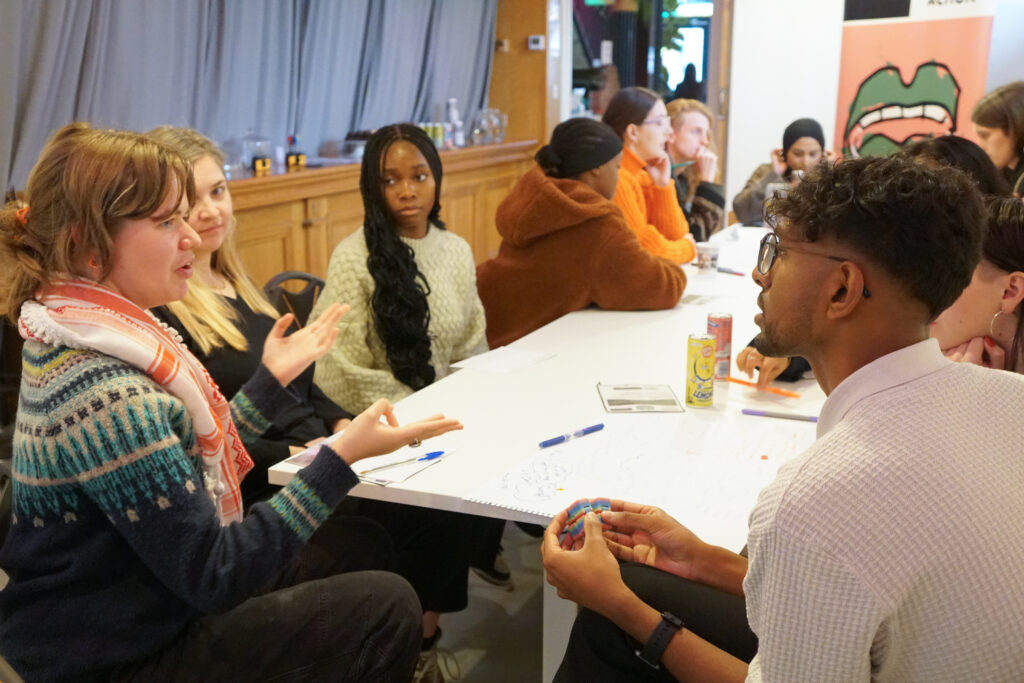Amy Genders outlines the need for greater representation of Welsh arts and culture on the BBC
Last year an estimated 35,000 people descended on the streets of Cardiff in celebration of the centenary of one of Wales’ literary greats, Roald Dahl. Taking place over a weekend in September, City of the Unexpected was an immersive experience consisting of both large-scale and intimate performances across the streets of the Welsh capital.
In the press and media coverage that followed the picture painted of Wales was one in which creativity and the arts were thriving. And if recent statistics are anything to go by it would seem this image was not far from the truth.
A 2016 survey by the Arts Council of Wales found that ‘96% of Welsh adults attend and/or participate in the arts each year’ compared to sports events which were reportedly only attended by 41% of respondents. Wales also makes a significant contribution to the world of contemporary art. Based in Cardiff and founded by Welsh artist William Wilkins, the Artes Mundi Prize is the biggest in the UK in terms of prize money, and unlike the more prolific Turner Prize is open to artists of any age and any nationality.
Yet the narrative of arts broadcasting in Wales over the past decade has been one of relative decline.
With a few notable exceptions including BBC One’s BAFTA nominated series Great Welsh Writers, there is now little in the way of regular returning arts series or strands on television. In 2015 the IWA Wales Media Audit reported that arts and music output on BBC Wales was ‘limited’, constituting just 12.9 hours in 2014/15. In its submission to the BBC Charter Review consultation the Arts Council of Wales also asserted that in recent years there has been ‘a decline in the capability of BBC Cymru Wales to deliver a cultural offer to Wales’ going onto state that ‘coverage of the arts in Wales has been neglected’.
Further to this, the concentration of BBC arts funding in London and Glasgow over the past decade has resulted in a production ecology in which representations of Welsh art and culture have not only been reduced within regional output, but also across the network.
Although Ofcom report that spend on first-run UK-network regional productions has increased by 1.5% in Wales since 2008, this has predominantly been bolstered by high-profile dramas which often do little to reflect the unique cultural identity of the nation in which it is produced.
The international success of series such as Doctor Who and Sherlock, for instance, has undeniably been instrumental in raising the profile of drama production in Wales. But the degree to which these series actually contribute to the plurality of cultural voices and representation on a network level is arguably limited.
In 2008 the Wales Broadcasting Committee described Wales as an ‘invisible nation on UK television screens’, and when it comes to arts broadcasting it would appear this continues to be the case.
This downward trajectory in the profile of Welsh arts and culture on screen also coincides with growing concerns around the London-centric nature of arts funding and access more broadly.
In 2013 the Rebalancing Our Cultural Capital report found that in England spending on museums, galleries and theatres in London amounted to £69 per person compared with £4.60 php in the rest of the country. Following the publication of these findings, the director general of National Museums Wales, David Anderson, highlighted further discrepancies between arts spending in London and the rest of the UK, stating that ‘71% of funding for the arts in the whole of the UK from trusts and foundations, corporate donors and private individuals goes to London institutions. The remaining 29% has to be shared out between all the other nations and regions’.
Rather than further contribute to this disparity, public service broadcasters in particular should be making a concerted effort to address this imbalance through strengthening their coverage of artistic work originating and taking place beyond the M25.
Indeed, according to the Arts Council’s website ‘over 24,000 people are employed in the arts and creative industries, in a sector that contributed around £465m to the Welsh economy’. With its reach and impact, broadcasting occupies a pivotal role in nurturing a thriving arts ecology and promoting Welsh arts institutions across the UK.
In relation to this, further attention needs to be given to strengthening the relationship between broadcasters such as BBC Wales Cymru and the wider arts sector.
For many arts institutions broadcasting is still seen as vital for extending their audience reach and justifying public funding as they become no longer just a London institution, for instance, but a national one. For broadcasters, partnerships with arts institutions provides access to a wealth of resources and artistic talent that may otherwise be difficult and/or expensive to procure otherwise.
However, in line with the findings of my own research and that of King’s College London long-term successful partnerships require clear communication and time to allow these relationships to develop somewhat organically over time. The bigger question here is how does this fit into the fast-paced, competitive nature of contemporary television production and commissioning? Especially when the success of these partnerships is often judged by outputs such as programme hours, rather than outcomes such as the greater benefits of these collaborations for the licence fee payer on a cultural and social level.
In conclusion, the arts matter to Wales socially, culturally and economically. Within this context, arts broadcasting is not only a mirror by which national identity is reflected back, it is also the stage on which it is expressed beyond the boundaries of individual nations and regions.
In light of the current social and political climate, the role of broadcasting in providing a platform to showcase the diversity of artistic expression from across the UK has perhaps never been greater. As already discussed at the top of the article, Wales has a rich cultural history and thriving contemporary arts scene to contribute to this. The stage is set and the players are in place; we’re just waiting for the cameras to start rolling.
Editorial note: This is part of Click on Wales’ week-long focus on media issues. The Media Policy Group of the Institute of Welsh Affairs is holding the third Cardiff Media Summit on 29th March and booking information can be found here






Hi Amy, Thought for the day:
Maybe if the stranglehold of Welsh nepotism in the arts in Wales as well as the massive funding by the hard-pressed Taxpayer
were addressed a more vibrant arts scene would emerge allowing those new voices to break through and not the constant whinging of wanting more and more subsidies to prop them up.
After all you yourself are attached to ,”Creative Industries” which would suggest entrepreneurship , ( and is there a word in Welsh for this ) would it not ?
Gillian
Quite frankly the thought of more programmes about Wales/Welshness etc on the BBC would for me result in a swifter transfer to SKY/BT and the WORLD awaits!!.I must be mixing with the wrong type of people and I have never heard a complaint/comment that there isn’t enough about Wales on television.Quite frankly the 30 minutes of so called news could be condensed to about 10 minutes,and if they show,at great expense the possibility of Tidal Lagoon in Swansea one more time!!
Gillian,
Was it George Bush who reputedly said “the trouble with the French is that they don’t have a word for entrepreneur”. I was reminded of that when you asked: “And is there a word in Welsh for this”. I believe it is “entrepreneuriaieth” – entrepreneur was borrowed into Welsh in the 19th century as it was into English. I don’t think Welsh gained anything that it didn’t already have already with words going back to the 14th century like “anturiaieth” or “yr ysbryd anturiaeth fasnachol”, but just like in English, I guess that Welsh also borrows a few words from elsewhere as well just to flower things up a bit.
Madam Patti – the French Diva – one time Queen of the Swansea Valley and of Craig-y-Nos Castle fame, probably epitomised a great artist and entrepreneur as this article in Y Drych from March 1895 shows – where she was raking in almost obscene amounts of money for her day and really shows what the value of the arts can be and she was renowned for being the ultimate Diva, who no doubt would have sulked, whinged, shouted, charmed and demanded to get whatever she wanted:
“DERBYNIA Madam Patti $4,000 am bob cyngerdd y cana ynddo yn Llundain, a chafodd $11,000 am un perfformiad yn Buenos Ayres. Tybia rhai fod y symiau aruthrol hyn yn hollol afresymol, ac yn gyfryw nas gall yr un gantores roddi eu cyfwerth; yr ydym o’r un farn, ond wedi’r cyfan, gwir werth peth yn y farchnad yw y swm ag y mae y prynwyr yn barod i dalu amdano. Y mae Patti wedi “cymeryd” gyda’r cyhoedd, tyra pobl i’w gwrando a’i gwel’d, a thalant yn mron unrhyw bris am hyny, a dyna’r oll sydd yn eisiau ar yr entrepreneur fydd yn ei chyflogi.”
As well as entrepreneuriaeth, the Welsh Academy dictionary gives mentergarwch, which would correspond to the English abstract noun enterprise (itself also borrowed from the French).
The French words enterprise and entrepreneur, have become global words that fit comfortably in many languages and developed meaning beyond their original expectations. Just thinking about what an entrepreneur was originally imagined to be and how the term is characterised today is very interesting. From the word origin it is basically about taking it upon yourself to seize or take something (this something could be an opportunity?)
Both entrepreneur and enterprise have the same language roots – entreprendre in old French (to begin something, to undertake), borrowed as a translation from Frankish underneman. It’s interesting that Dutch, which to me is a bit like a sister language to English has stuck with words of Germanic family origin like “ondernemen” for undertake or enterprise and “ondernemer” for entrepreneur, while English, just like Welsh has adopted the French terms, which come from the Latin family of words.
Also from a Celtic language family perspective the original undernemen/entreprendre might match up well in Welsh with words like“ymgymryd” or “ymafael” – words which can nicely describe what an entrepreneur does and will often be associated with entrepreneur, entrepreneuriaeth or mentergarwch.
I am no expertise in anything I have written above, but to me it was interesting in trying to think about how to describe an entrepreneur and entrepreneurship. In my mind an entrepreneur and a buccaneer or maybe a pirate are two sides of the same coin, separated in part by the law.